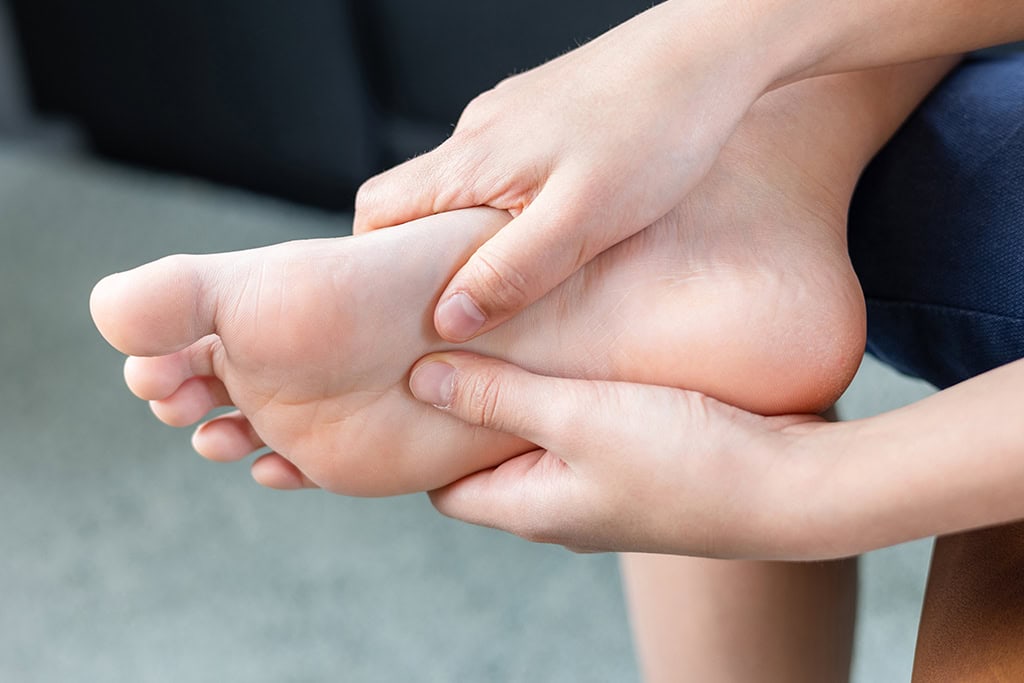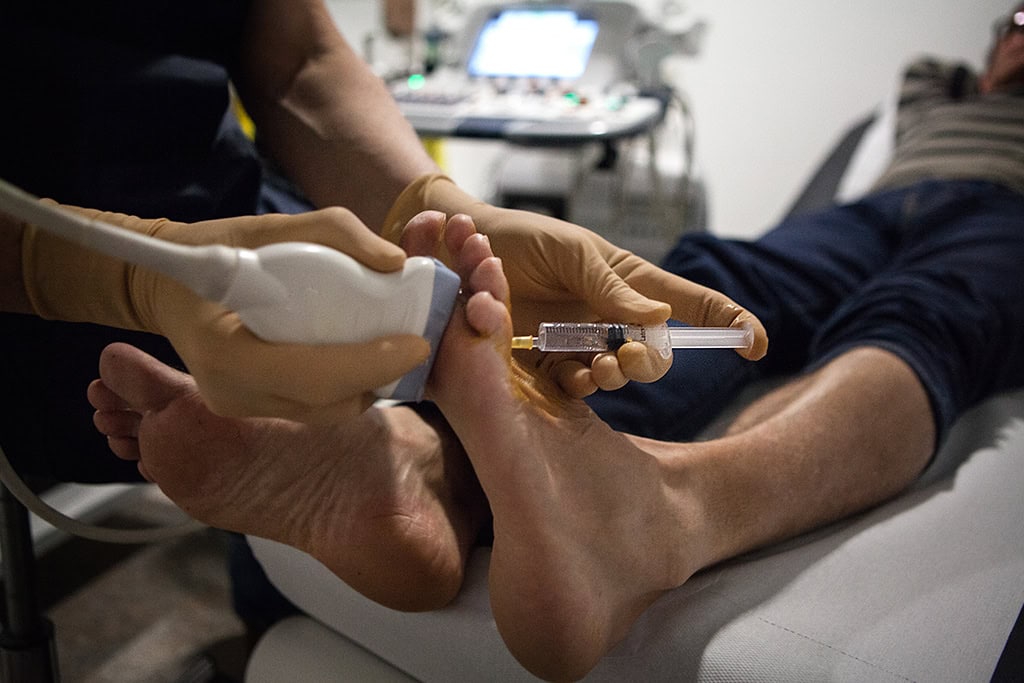Forefoot Pain
What Is Forefoot Pain?
Forefoot pain is pain in the ball of the foot, the area just behind the toes. This part of the foot has bones, joints, tendons, nerves and soft tissue that help with movement and stability. When any of these structures get irritated or strained it can cause pain that stops you from walking, standing or wearing shoes comfortably.

Common Causes of Forefoot Pain
Forefoot pain can be caused by overuse, poor footwear, structural foot issues or underlying medical conditions. Some of the most common causes are:
Metatarsalgia
Generalised pain and inflammation in the ball of the foot, often caused by pressure overload, poor footwear or abnormal foot mechanics.
Morton’s Neuroma
A thickened nerve between the toes (most commonly the 3rd and 4th) that causes burning, tingling, numbness or feeling like you’re walking on a pebble.
Sesamoiditis
Inflammation of the small sesamoid bones under the big toe joint, caused by repetitive impact or stress.
Capsulitis
Inflammation of the ligaments around the joint at the base of a toe, most often the 2nd toe, causing swelling, tenderness and instability.
Plantar Plate Injuries
Tears or weakening of the ligament under the ball of the foot that causes pain and misalignment of the toe.
Stress Fractures
Small cracks in the metatarsal bones from overuse that causes localised pain and swelling that worsens with weight-bearing.
Toe Deformities
Conditions like hammertoes or bunions that shift pressure forward onto the forefoot causing irritation and discomfort.
Arthritis & Bursitis
Joint inflammation or irritated bursae (fluid filled sacs that cushion joints) that causes chronic forefoot pain and stiffness.
Take the First Step Toward Relief
If you’re experiencing persistent forefoot pain early evaluation can prevent complications and speed up recovery. Book an appointment with Vale Foot and Ankle today to find out what’s causing your pain, and how to fix it.
Forefoot Symptoms to Watch For
- Pain in the ball of the foot that gets worse with activity
- Burning, tingling or numbness in the toes
- Swelling or redness in the forefoot
- Feeling like you’re walking on a lump or pebble
- Stiffness or instability in the toes
- Difficulty walking barefoot or wearing certain shoes
- Calluses or thickened skin under pressure points


Diagnosis
Diagnosis starts with a physical exam and review of your symptoms, activity level and footwear. At Vale Foot and Ankle we may perform movement tests or use imaging, such as X-rays, ultrasound or MRI, to identify conditions like fractures, ligament damage or nerve compression.
Treatment Options for Forefoot Pain
Treatment depends on the underlying cause but most cases respond well to conservative care. The goal is to relieve pain, address contributing factors and prevent recurrence.
Non-Surgical Treatments
- Footwear modifications – Switch to shoes with a wide toe box, low heel and firm support
- Custom orthotics – Shoe inserts that support your arch and redistribute pressure
- Padding & taping – To offload pressure from sensitive areas
- Anti-inflammatory care – Ice and over-the-counter medications to reduce swelling
- Activity modification – Avoid high impact activities that worsen symptoms
- Physical therapy – Exercises to stretch and strengthen the foot and lower leg
- Corticosteroid injections – Used selectively for inflammation that doesn’t respond to other treatments
Surgical Treatment
Surgery is only considered if conservative treatments fail or if a structural problem needs to be corrected. Procedures may include joint realignment, nerve decompression or removal, ligament repair or fracture stabilisation. Your podiatrist will explain the best option for you based on your diagnosis and goals.
Preventing Forefoot Pain
- Wear properly fitted shoes with cushioning and support
- Avoid high heels or tight footwear for long periods
- Use orthotics if you have biomechanical issues
- Cross-train to reduce repetitive foot stress
- Maintain a healthy body weight
- Stretch and strengthen your feet and calves regularly

Why Choose Vale Foot and Ankle to Treat forefoot Pain?
At Vale Foot and Ankle we take a personal approach to diagnosing and treating forefoot pain. Whether your symptoms are mild or chronic our team focuses on getting you back on your feet with practical solutions that match your lifestyle.
Latest Posts

Does Insurance Cover a Podiatrist Visit in Connecticut?
If you are dealing with foot pain or an ankle issue, the last thing you

Types of Ankle Sprains: Causes, Symptoms, and Recovery Tips
Of the many injuries we see, ankle sprains are perhaps the most common — especially

Tailor’s Bunion (Bunionette) Stages
A tailor’s bunion, also known as a bunionette, may seem like a small foot problem,
